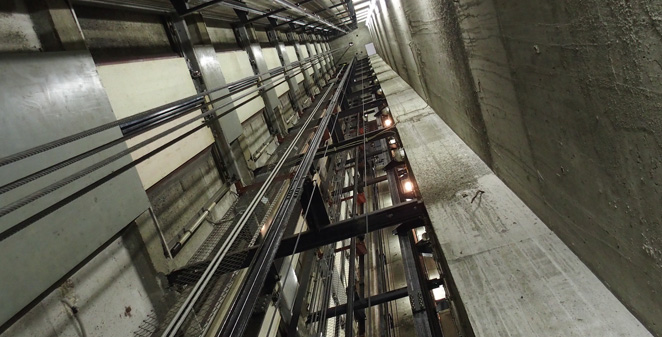Most elevators still feature some kind of rope system. In low-rises (buildings up to four floors), hydraulic jacks are in place to move the elevators. Such elevators can be in the ground, above the ground, single-stage or telescopic in nature. They’re best for accommodating just 100 feet of travel.

For high rises, a roped system is required. But the ropes used in elevators are not some flimsy braided ropes like you would use to tie a Christmas tree to your roof. They are actually quite heavy duty and safe.
Modern elevator ropes, made of steel and other composites, are engineered to withstand high amounts of weight and pressure. They aren’t comprised of single wires, but multiple strands of many sizes of ropes wrapped together. Your typical elevator cable or rope could feature more than 150 strands of wire! This gives your elevator the most flexible and lifelong service possible.
Multiple wire strands not only boost the life span of the cable, they give them plenty of flexibility to get the job done. There are many types of elevator ropes. The one your elevator has will depend on its performance requirements. Here are some of the most common types of ropes you will see.
1. Hoisting
Just like what you’ve seen on TV, hoisting ropes are designed to suspend the cab while also allowing the car to move upwards and downwards. These ropes comprise the cables as counterweights, which – true to their name — counter the weight of any loaded car so the effort to move it isn’t so great.
High-strength ropes are used in high rises due to the required speeds, as many must travel as fast as 45 miles an hour.
2. Compensating
Compensating ropes “compensate” for the weight of hoisting ropes on the counterweight or car side. The cables and ropes in place to move such a large elevator are extremely heavy, especially when it comes to high rises and skyscrapers. Case in point, a one-inch elevator cable weighs nearly two pounds a foot.
3. Governor
Governor ropes are encompassed in elevator safety systems in the overhead or hoistway space. If an elevator car fell or rose too quickly, the governor rope would be there to trigger the safety mechanism on the car’s frame so it would come to a stop.
In the end, despite the type of rope used in your elevator system, it should be checked and inspected regularly. Because it has such great safety ramifications and responsibilities, it must be in strong working order at all times. Ropes should be inspected for wear patterns, tension, diameter, rusting, strand breaks, pitting, proper lubrication, and connections.
To find out more about what ropes Mowrey Elevator installs, inspects and repairs, contact us today!
